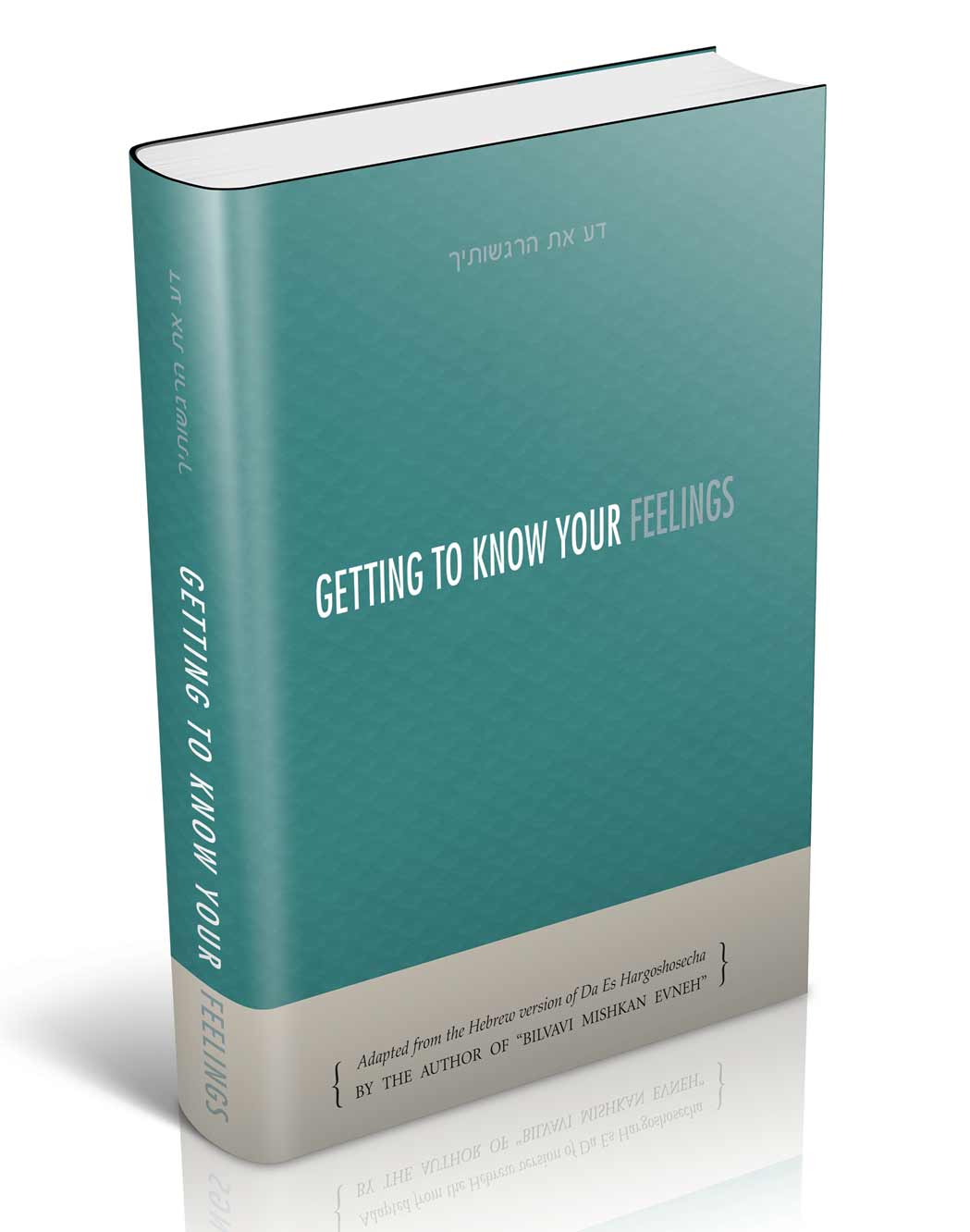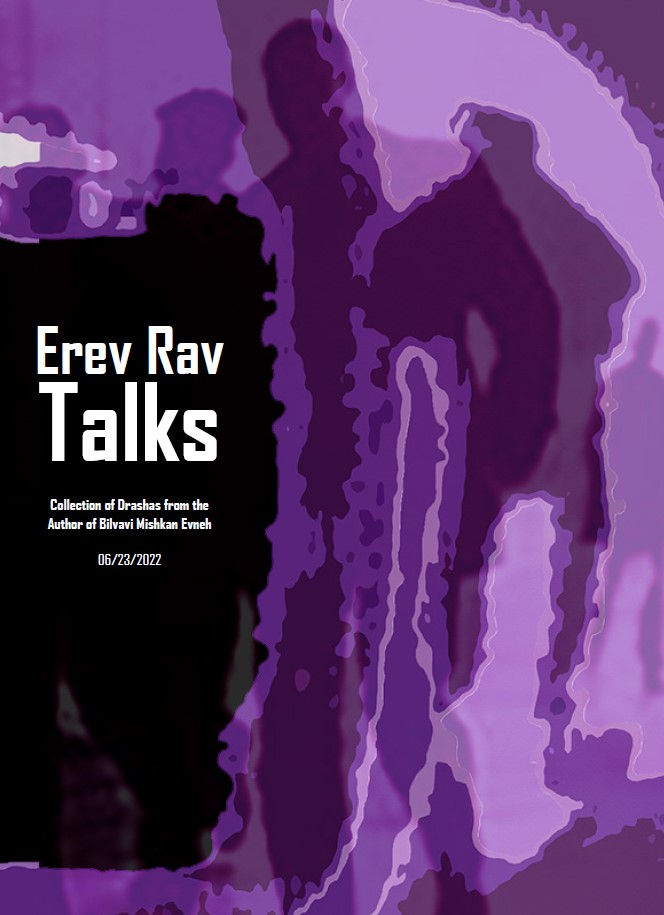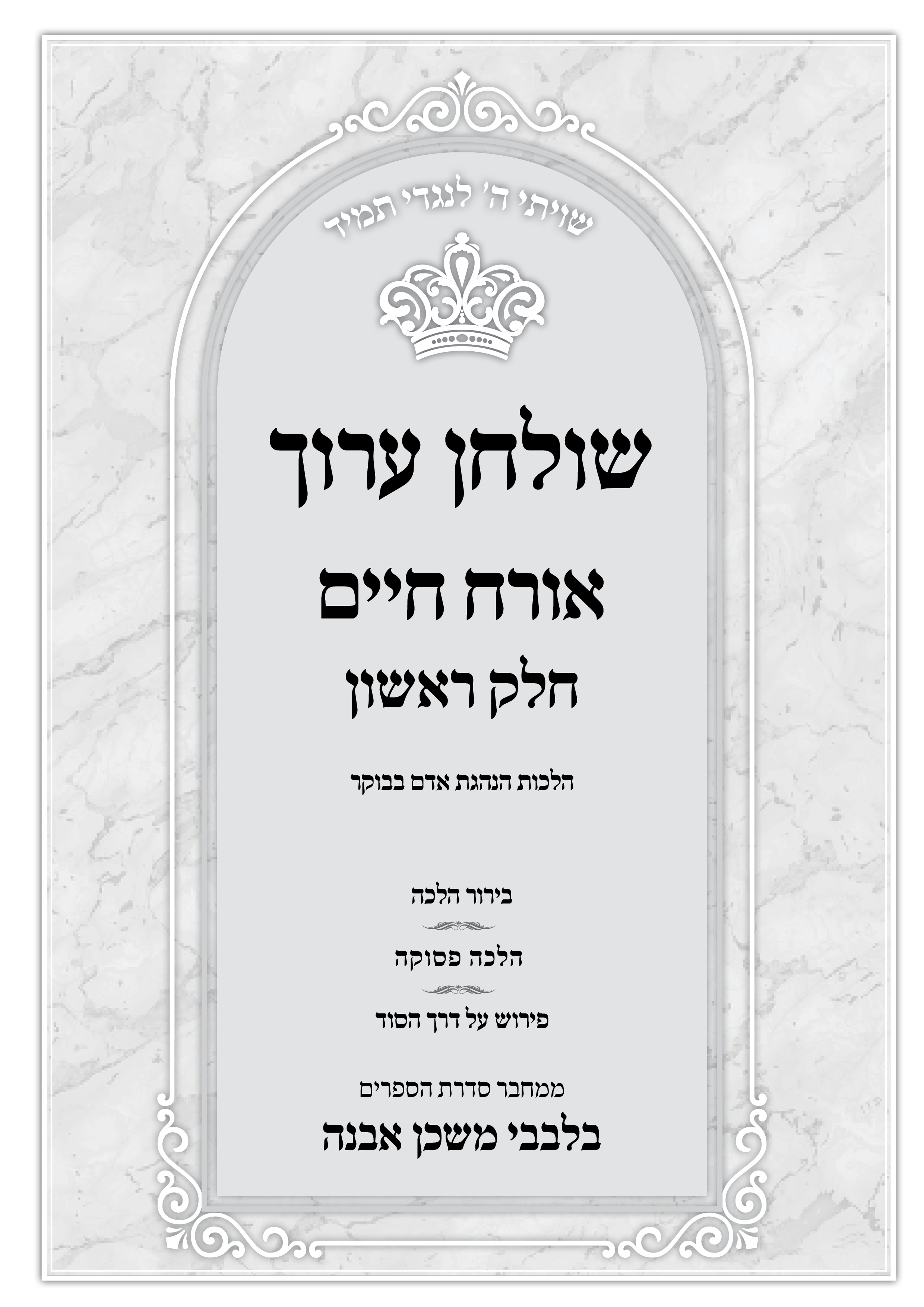Available Now In All Bookstores
- 3522 reads
- Printer-friendly version
- שלח דף במייל
 GETTING TO KNOW YOUR FEELINGS
GETTING TO KNOW YOUR FEELINGS
THE GATEWAY TO UNDERSTANDING YOUR EMOTIONS
Come to understand yourself better. Heal your negative emotions.
Uncover your truer, deeper feelings.
Da Es Hargoshosecha – “Getting To Know Your Feelings” – continues the exploration into our soul, which began with the popular Da Es Atzmecha (“Getting To Know Your Self”), Da Es Nafshecha (“Getting To Know Your Soul”), and Da Es Beischa (“Getting to Know Your Home”).
We each have seven primary emotions in our soul, which can be used either negatively, for evil, or positively for good: self-love, self-hatred, pride, stubbornness, admission, connection, and lowliness. We can each uncover the main negative emotion in our lives, and through that, attain emotional peace. We can also learn how to access our true emotions, which are the deeper feelings within the layer of our G-dly soul. If we access those deeper feelings within us, we can all lead a life of gratifying emotional experiences, knowing how to develop lasting feelings, and reacting better to our respective life situations.
This is a sefer that can truly help you to grow.
Part One helps the reader define, recognize and understand the seven primary negative emotions – how to uproot them, as well as how to use them positively. We also learn here that our imagination can delude us into having feelings that are off-base, and how we can leave those imagined feelings behind and replace them with holiness.
Part Two describes the deeper, G-dly emotions which we can access. ‘Getting To Know Your Feelings’ clarifies our emotional world. Although our emotions do not fully define our very essence -- for there is more to who we are than our emotions – our emotions nonetheless play a big role in our life, and we need to learn how to refine them.
This sefer reveals astounding truths about the emotions of a Jew’s soul , explained clearly through the pure wisdom of Torah and Chazal. Anyone who seeks therapy (or even if he doesn’t) and reads this book seriously, will discover true healing both within these pages and within himself.
Editor's Introduction
This is the sixth sefer of the author adapted for English readers. The first two known as Bilvavi Mishkan Evneh (Building a Sanctuary in the Heart Part Part One and Part Two) detailed the practical steps in attaining the state of “feeling attached to Hashem at all times.”
The seventeen chapters of this sefer constitute the fourth in the series detailing practical steps in getting to know your self. Those who have read the author’s previous books in this series – Getting To Know Your Self, Getting To Know Your Soul, and Getting To Know Your Home – know that this newest volume expands upon the concepts of its predecessors. For those new to the series, be aware that this is a book that challenges us to think and reach deeply into ourselves, with the potential to alter our very psyche and orientations if we choose to internalize the lessons it imparts.
This sefer is not a simple read – it requires a lot of concentration and, “generally speaking, there are no short cuts.” The author has elucidated basic concepts of Chazal that need time to understand. Please keep in mind that the author’s views are expressed from the perspective of pure Torah. Most of us, not coming from this perspective, might hear something that just does not click. In addition, if there is something that is really difficult to understand, then please consult the Hebrew version of this sefer דע את הרגשותיך.
The translation offered is an adaptation of the published Hebrew version. We have included many footnotes for reference and have attempted our best to maintain the accuracy of the author’s concepts in English. Any mistakes in adapting the original Hebrew version to contemporary English lie with the editorial team and not with the author.
In Getting To Know Your Self, the first book of the series, the author explained the general concept of how the body is a garment of the soul, and all evil only exists on the external garment of man – the soul is always inherently good. The author explained how to employ this concept to attain self-esteem, love, and happiness. It also began the discussion about the nature of the soul which is always moving, and its need to be balanced.
Getting To Know Your Soul explained the thirteen root faculties of the soul, as well as the four different elements of the soul – earth, water, wind and fire – which form the foundation of different kinds of personalities. The elements need to be balanced in order for a person to maintain a normal, healthy lifestyle – as explained in that book.
Getting To Know Your Home built upon these soul concepts and explains how we can look at our ourselves, our marriage and raising children in a deeper way.
These first three books form the basic idea of this series – using the soul, getting in touch with it, and vastly improving our lives as a result. When we improve our general lifestyle like this, we can come to serve our Creator better, since we cannot really serve our Creator unless we have a healthy soul.
Now comes the book in your hands, Getting To Know Your Feelings. Here we delve deeper in the journey towards our inner self, exploring our feelings in a way we have never known about before. As the author states in the introduction to the Hebrew version: “The main point of this book is to show us how to differentiate between what is our feeling and what is our imagination, as well as how to deal with our feelings – their roots, and their branches.”
It is a synthesis of the author from the vast Torah knowledge contained in our sefarim hakedoshim, the holy books of Jewish thought.
The author has stated elsewhere that the truths about psychology are contained in our sefarim hakedoshim – in Torah and in Chazal – but this knowledge is scattered, and is not concentrated in one place. In this book, the author has attempted to unify all of the teachings pertaining to the emotions.
However, the soul in its entirety cannot be explained in one book alone, for the information would be too overwhelming. Getting To Know Your Feelings thus offers us clarity to our emotional world, even if our picture of the soul is not yet complete.
Please keep in mind that there are other areas which this sefer does not address, such as our thoughts and our imagination, our senses, our other middos/behavioral traits; these are the subjects of other volumes of the author, which have already been published in the Hebrew language.
Our feelings are not who we are. They make up a large part of who we are – but they are not the deepest part of our self. Our thoughts are even deeper than our feelings, but our thoughts also do not define our actual self. Even our spiritualty isn’t who we are.
What is our essence? We are all a cheilek Eloka mima’al, a “part of G-d from above.” That is who we are. Covering our essence are the “garments” of our soul – our actions being the most external layer, our feelings/emotions being a more inner layer, and our thoughts being an even more inner layer.
The essence of the soul was explained briefly in Getting To Know Your Self, and the general way of reaching it was described as well by accessing the power of inner silence, attained by being alone.
Refer to Getting To Know Your Self for more about the actual essence of the soul. We need to complete our knowledge of the soul, and, therefore, we need to learn about our soul’s garments as well such as our emotions.
Part One, Dealing With Your Negative Emotions of this book deals with our negative emotions. There are two layers of the emotions. When left undeveloped, the outer layer expresses worldly, physical pleasures and is fueled by the power of evil imagination. These negative emotions come from our nefesh habehaimis (the soul that gives life to the physical body) and they can be healed, as we will learn in this sefer. Our deeper, spiritual feelings come from our nefesh haElokis, the “G-dly” part of the soul. We do not need to heal these emotions, but we do need to learn what they are and give them more balance, as we will see in this sefer.
There are seven primary negative emotions, and we must individually locate the main emotion which is manifest in our life. The other emotions are branches of the dominant negative emotions. We must address the root negative emotion we discover in ourselves, as opposed to the other secondary emotions. To attain emotional equilibrium, we must each locate the dominant negative emotion within the self, and work to improve that specific emotion. Our other negative emotions will be automatically improved as a result.
How do we remove our negativity? One method explained in this sefer is to learn about each emotion separately and learn how to handle each one. The solutions are given – sometimes there are several options to take. An additional method, also explained in this sefer, is to attack the core of our negative emotions, which is the power of evil imagination. This is the general outline of the solution, but because imagination is a vast topic unto itself, it really requires another sefer. This was published in Hebrew as דע את מחשבותיך.
Part Two, The World Of Your Feelings explains how we develop deeper feelings, the feelings which come from our nefesh haElokis (G-dly layer of the soul). We learn here that our true emotions are accessed only through getting in touch with the power of “da’as” (knowledge), the awareness of reality.
This sefer is filled with much informative material, and it is deep reading. It can help the reader understand better his/her emotions, and it can also be of great aid to educators and teachers, psychologists and therapists.
In the original Hebrew version of this sefer, Part Two preceded Part One. The order was changed in this edition for the sake of simplicity. Part One is more practical and down to earth than the deep concepts discussed in Part Two; one is able to start from Part Two and then go back to Part One, but it is recommended to go in the order as presented.
We have also included a summary of all the chapters for quick reference at the end of this book.
It is our hope that this sefer will help us understand ourselves better, since emotional health is a prerequisite to serving the Creator.
















